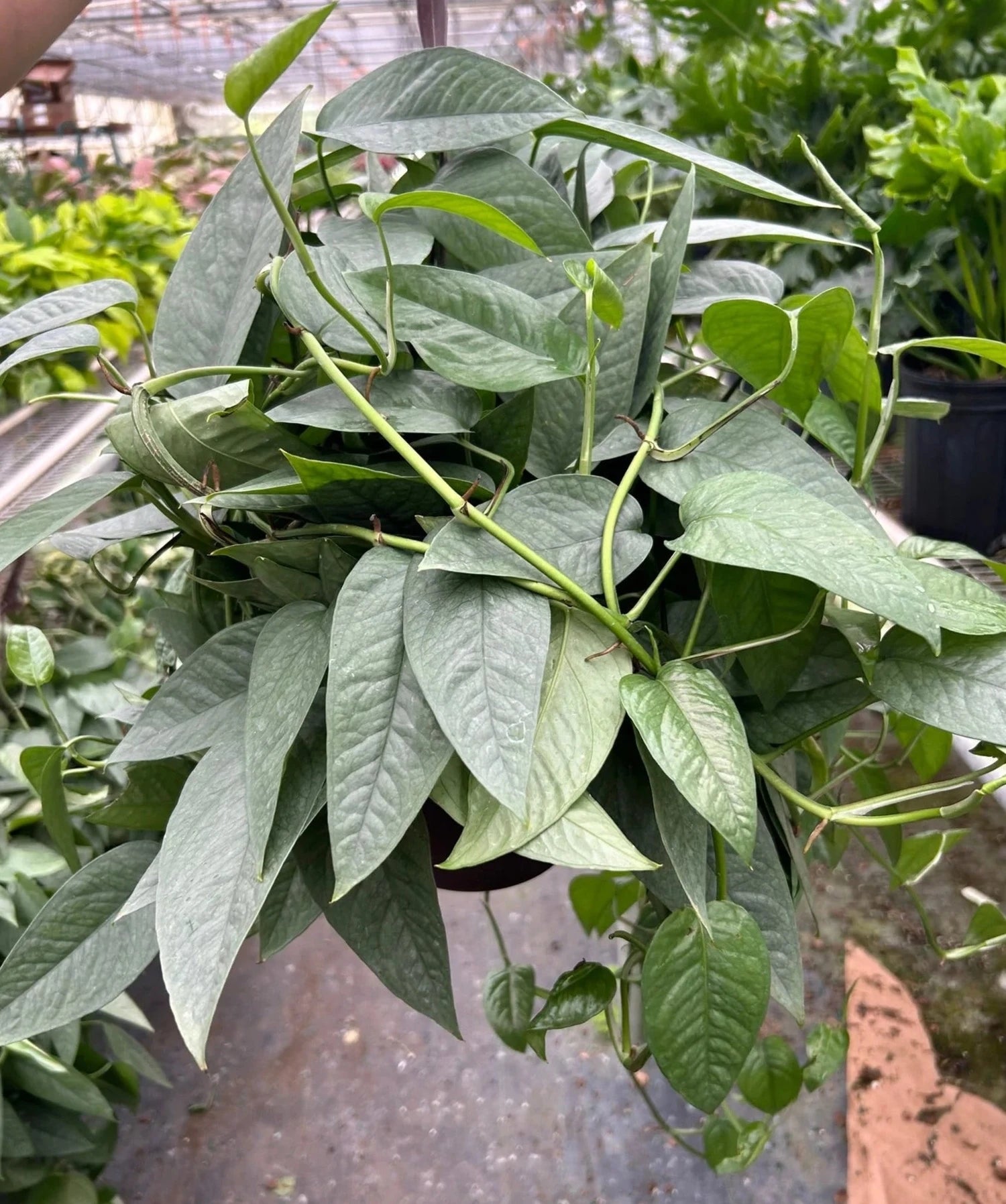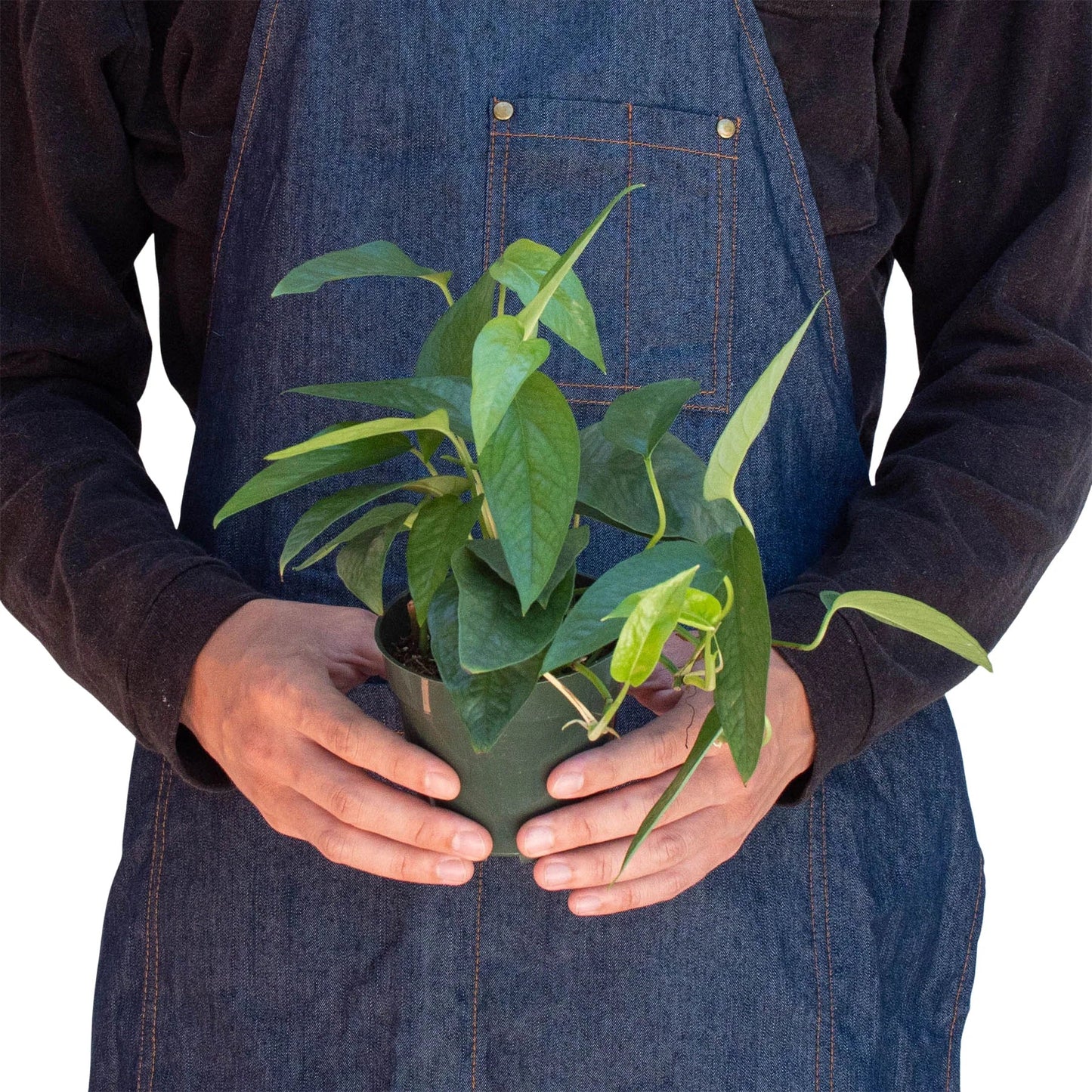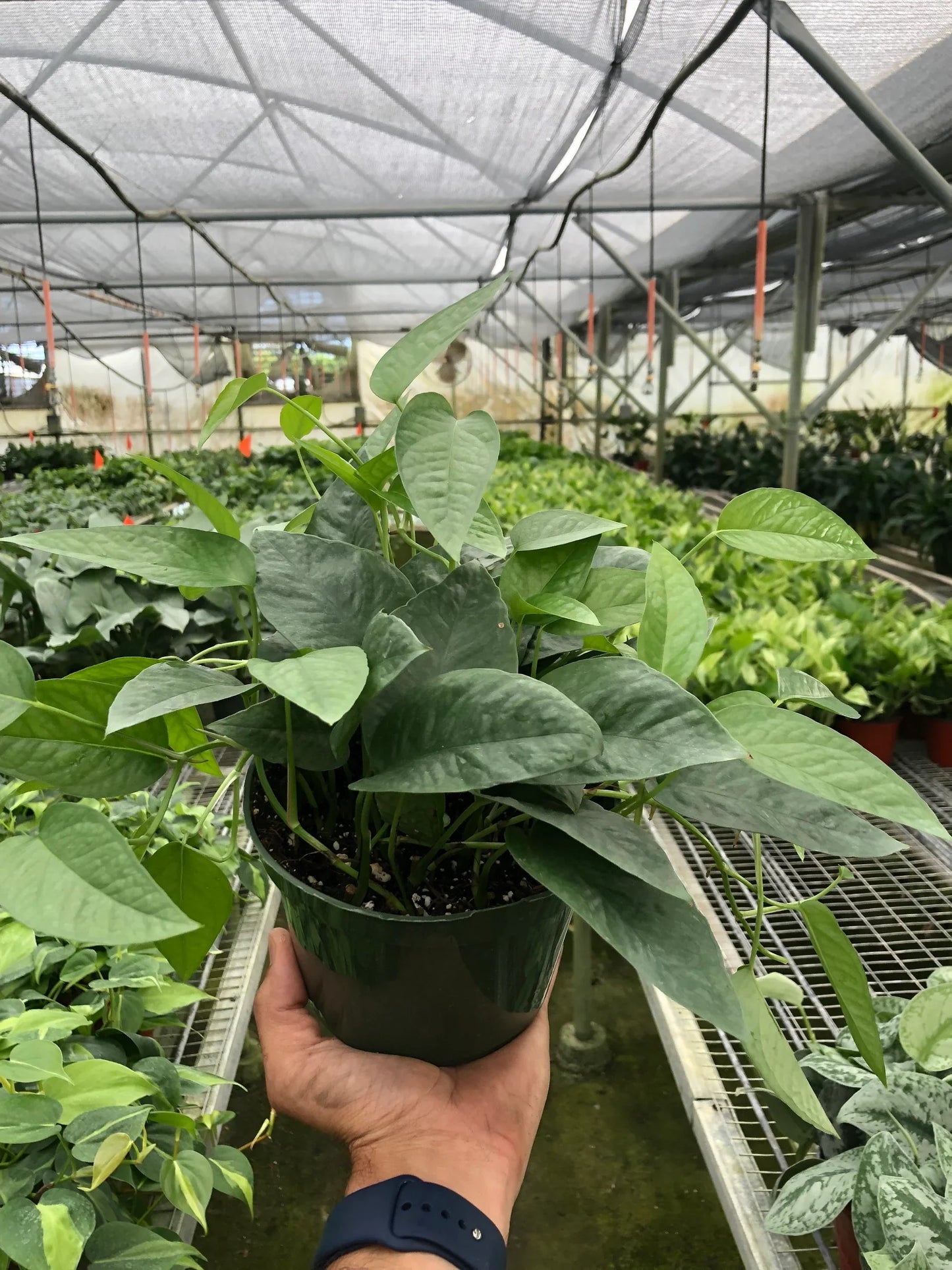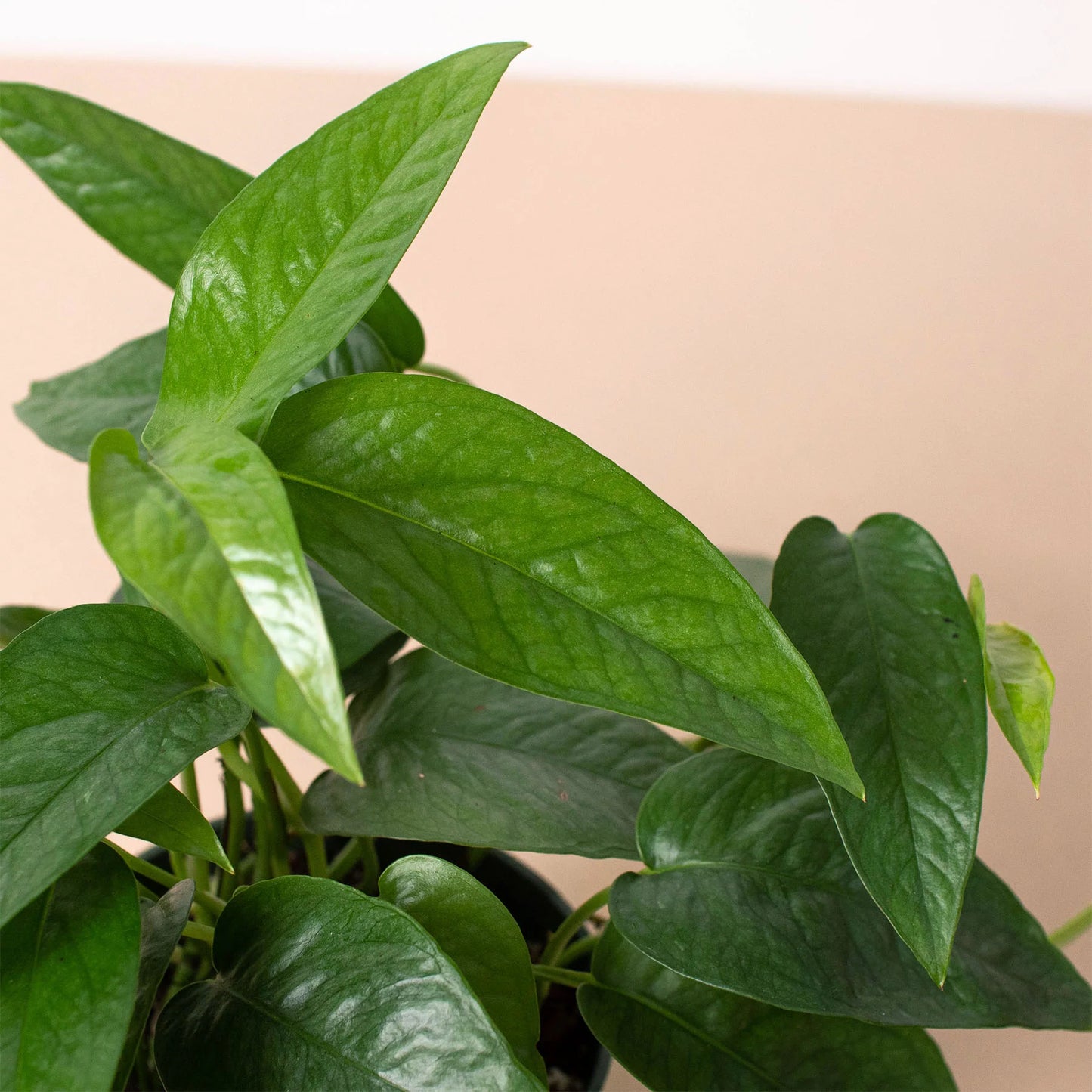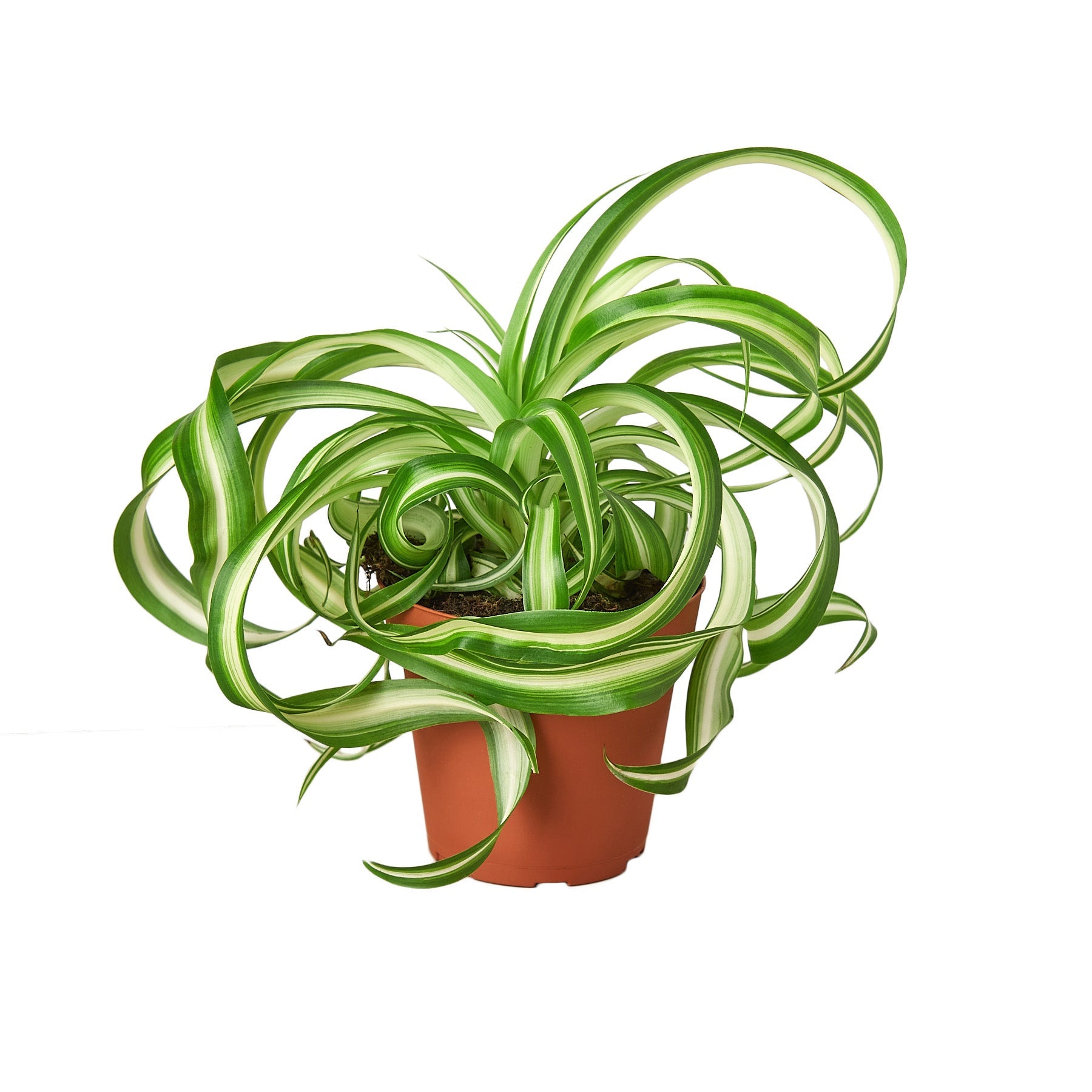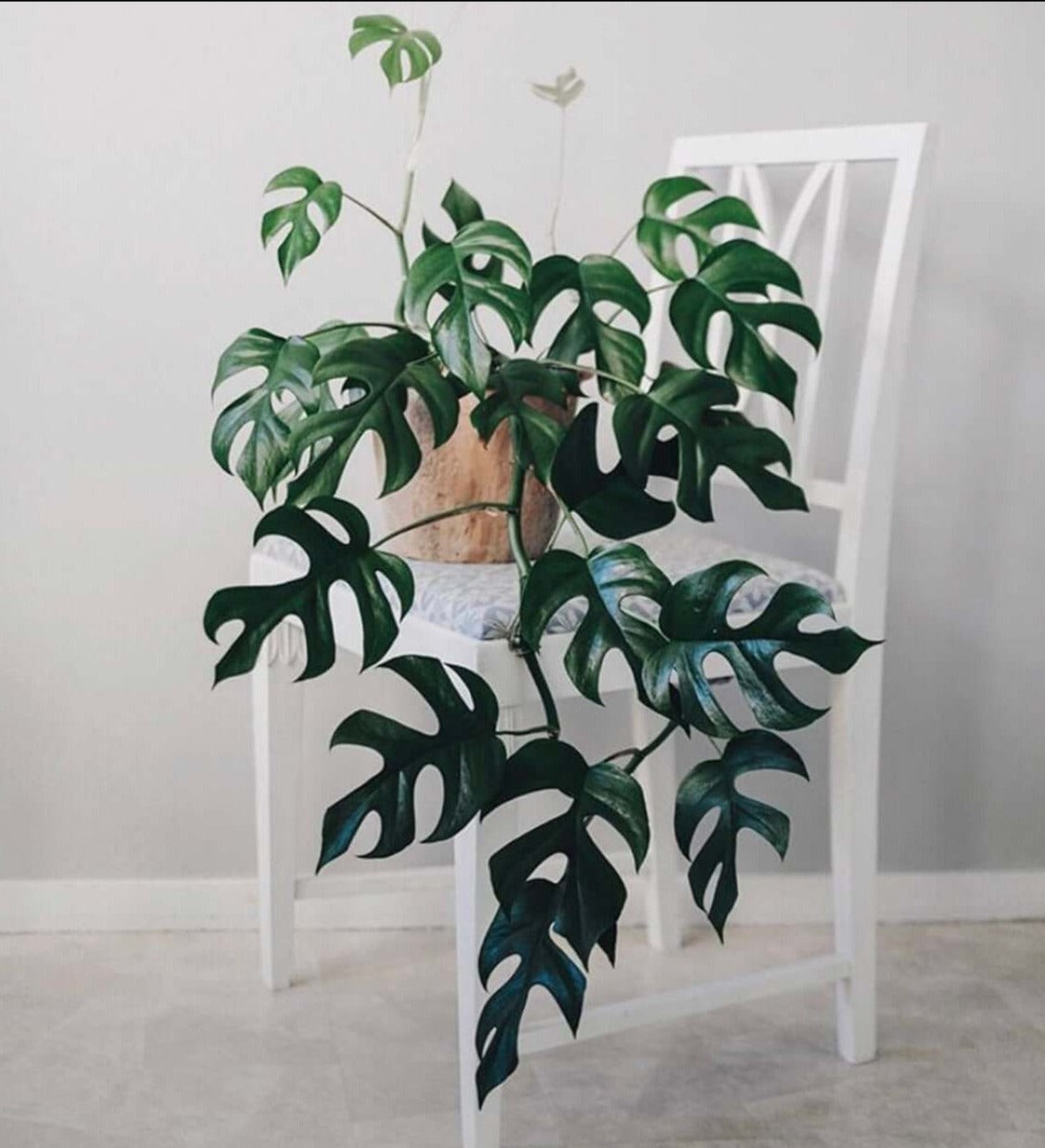Description | Cebu Blue Pothos - Epipremnum Pinnatum
Overview
The Cebu Blue Pothos is an extraordinary houseplant that adds a splash of color and texture to any indoor space. Its heart-shaped, silvery-blue leaves reflect light beautifully, creating a serene and inviting atmosphere. This plant is not only admired for its aesthetic appeal but also for its adaptability and ease of care, making it an ideal choice for both novice and experienced plant enthusiasts.
Appearance
Characterized by its dazzling silvery-blue foliage, the Cebu Blue Pothos exhibits a vining habit that makes it perfect for hanging baskets or as a climbing plant with the support of a trellis. Its leaves are elongated and heart-shaped, with a glossy finish that catches the eye. As the plant matures, its leaves can develop fenestrations, adding an extra layer of visual interest.
Unique Attributes
The Cebu Blue Pothos is celebrated for its air-purifying qualities, capable of filtering out common household toxins from the air. This, combined with its low-light tolerance and minimal care requirements, positions it as an exceptional choice for enhancing indoor environments.
History and Origin
Originally hailing from the Philippines, specifically the Cebu island, hence its name, the Cebu Blue Pothos is a testament to the beauty and diversity of tropical flora. Its adaptability has allowed it to become a favored houseplant around the world. Though not a hybrid, its unique coloration has made it a sought-after variety among collectors and indoor gardeners alike.
Care Instructions
Light Requirements
Prefers bright, indirect light but can tolerate lower light conditions. Avoid direct sunlight to prevent leaf scorch.
Watering
Water when the top inch of soil feels dry to the touch. Overwatering can lead to root rot, so ensure proper drainage.
Soil and Fertilization
Use a well-draining potting mix. Fertilize monthly during the growing season with a balanced, water-soluble fertilizer.
Temperature and Humidity
Thrives in temperatures between 60-85°F (15-29°C). Prefers higher humidity but can adapt to average home humidity levels.
Pruning and Maintenance
Prune as needed to control growth and encourage bushiness. Remove yellow or damaged leaves to keep the plant healthy.
Propagation
Easily propagated by stem cuttings. Place cuttings in water or directly into soil to root and grow new plants.
Companion Plants
Choosing the right companion plants can make your space a lush, healthy haven, enhancing the beauty and vitality of your garden. Opt for plants with similar light and humidity preferences to ensure they grow harmoniously together. This thoughtful selection not only enriches the visual appeal of your space but also contributes to a balanced and supportive environment where each plant can thrive.


